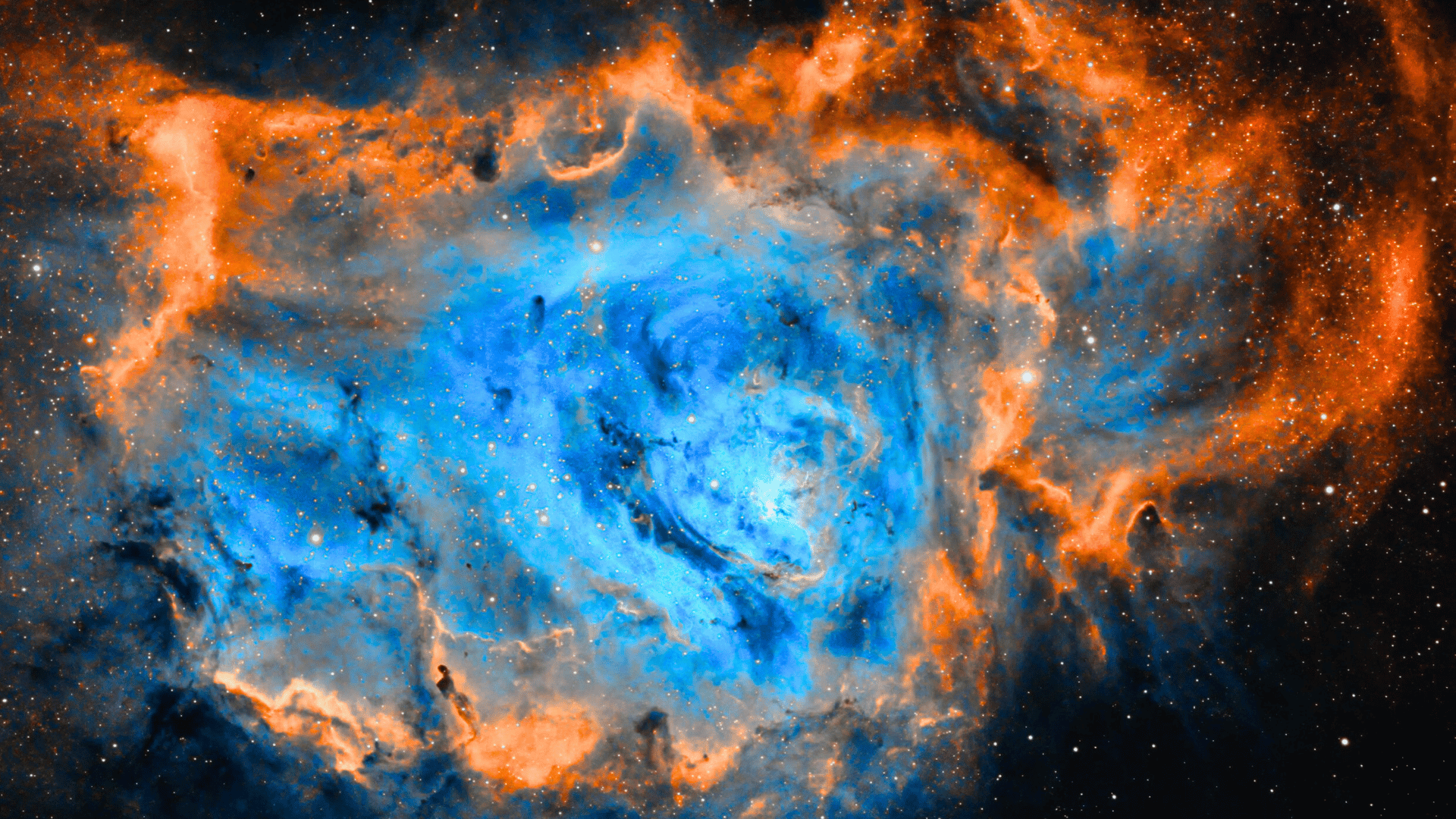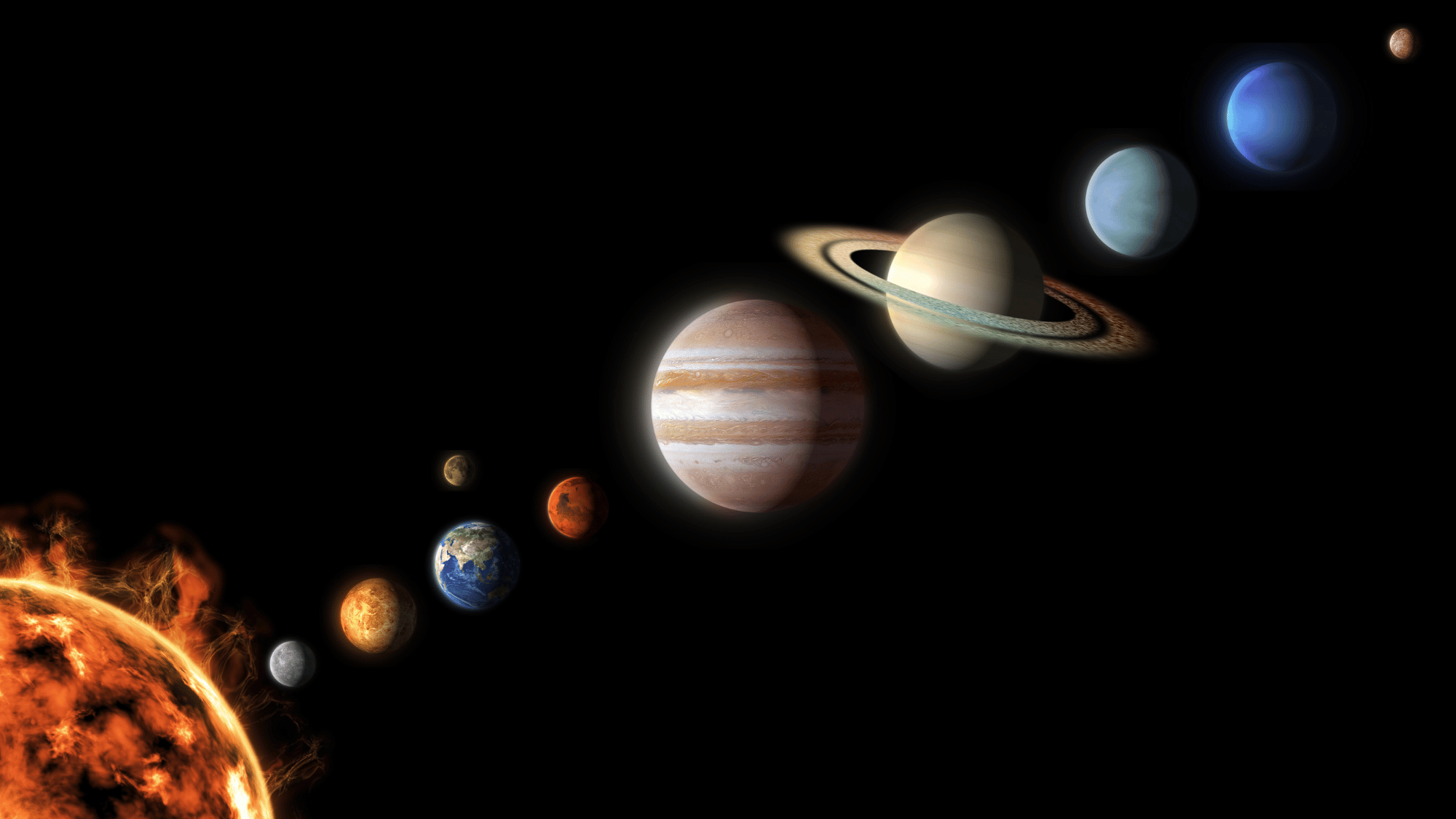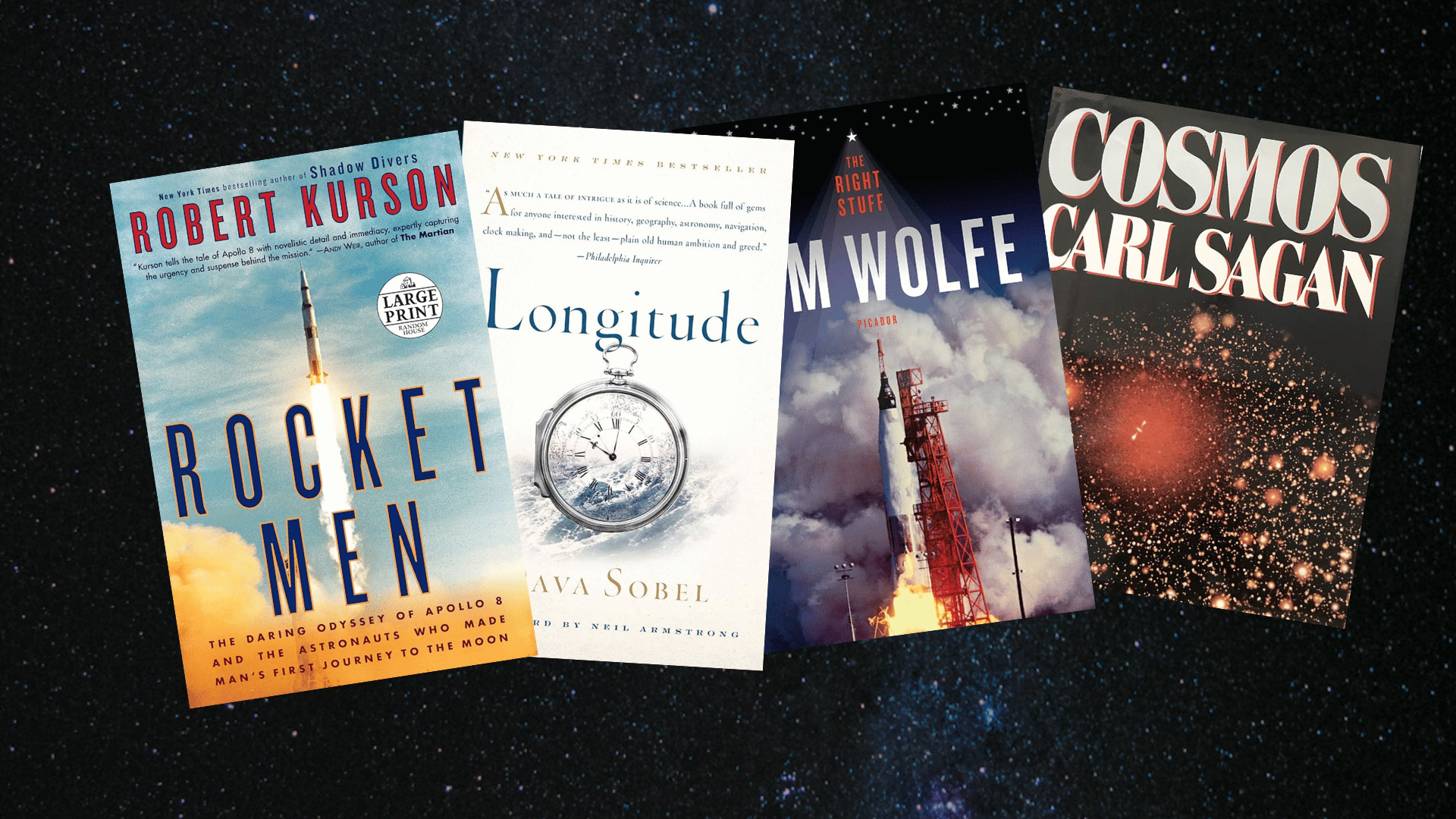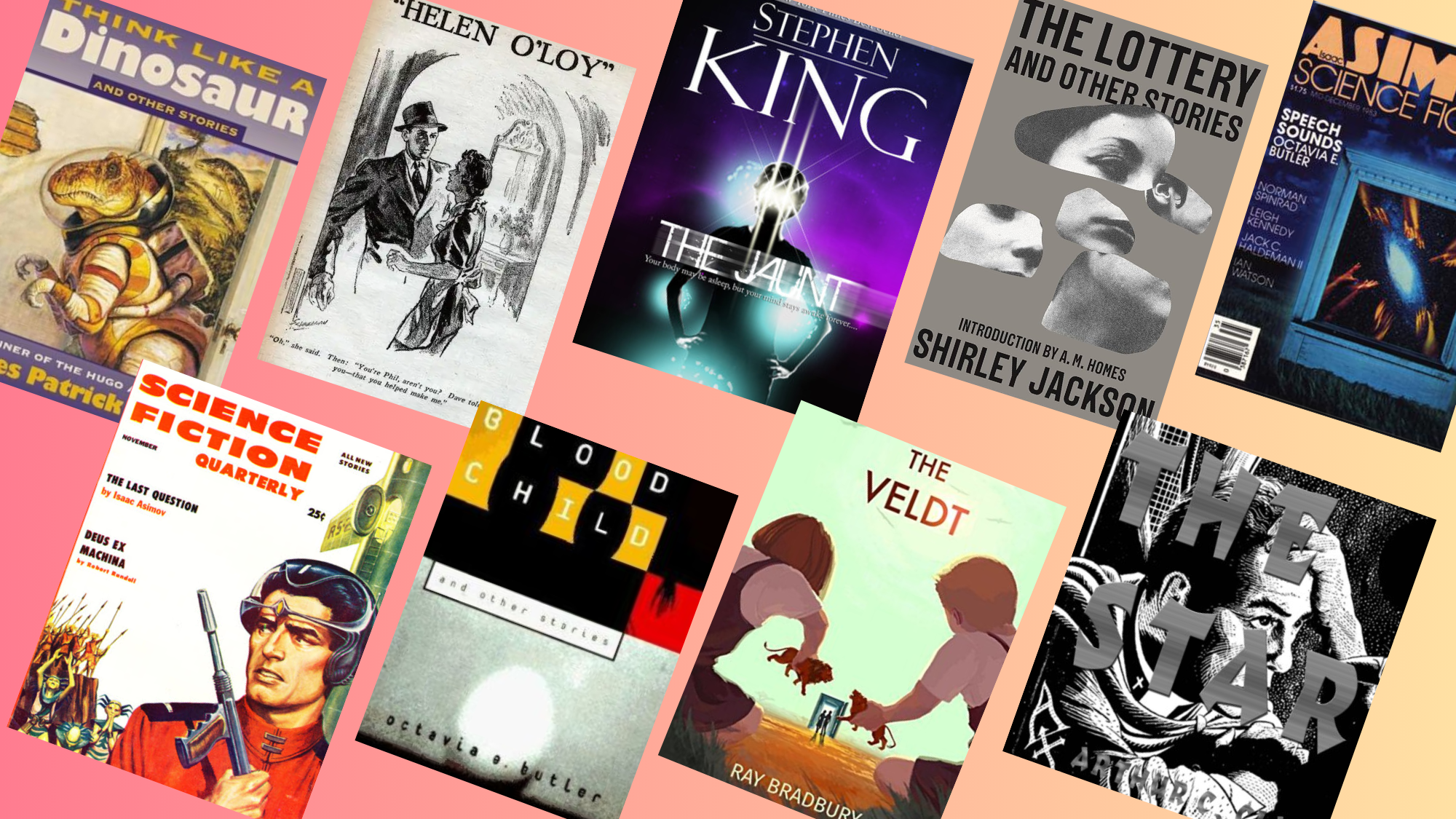Ever wonder where stars come from? High above Earth floats a massive pink cloud called the Lagoon Nebula, and it’s like a cosmic baby room where new stars are born.
This space cloud sits 4,000 light-years away and glows with colors so bright that people can see it through binoculars on summer nights.
Inside this giant gas cloud, tiny bits of dust and gas squeeze together until boom, a brand new star lights up! Scientists love studying it because they can watch star birth happen in real time.
The best part? You don’t need fancy equipment to find it in the sky. Want to learn more about this amazing space nursery? Let’s take a closer look.
What is the Lagoon Nebula?
The Nebula is a giant cloud made of gas and dust in outer space. It’s really, really far away from Earth, about 4,000 to 6,000 light-years away.
That means if you could travel at the speed of light, it would take you thousands of years to get there! This space cloud is enormous. It stretches about 110 light-years across.
That’s much bigger than our whole solar system! Scientists also call it by other names: Messier 8 or M8. The nebula got its name because it looks like a lagoon.
A dark strip of dust cuts through the middle of the bright, glowing gas. This makes it look like water separating two shores.
Why is it Called the Lagoon Nebula?
It got its name from the way it appears in the sky. It looks through a telescope. When people first studied it, they noticed dark lines of dust cutting across the glowing gas.
These lines made the nebula look like a calm lagoon of light surrounded by shadows, much like a lake on Earth. The glowing gas is mostly hydrogen, lit up by young, hot stars at its center.
The mix of bright clouds and dark streaks gives it a special shape that reminded early astronomers of a lagoon. This name has stayed for hundreds of years.
Today, when stargazers aim their telescopes at Sagittarius, they can see a glowing pool shining in the Milky Way.
Key Characteristics of the Nebula
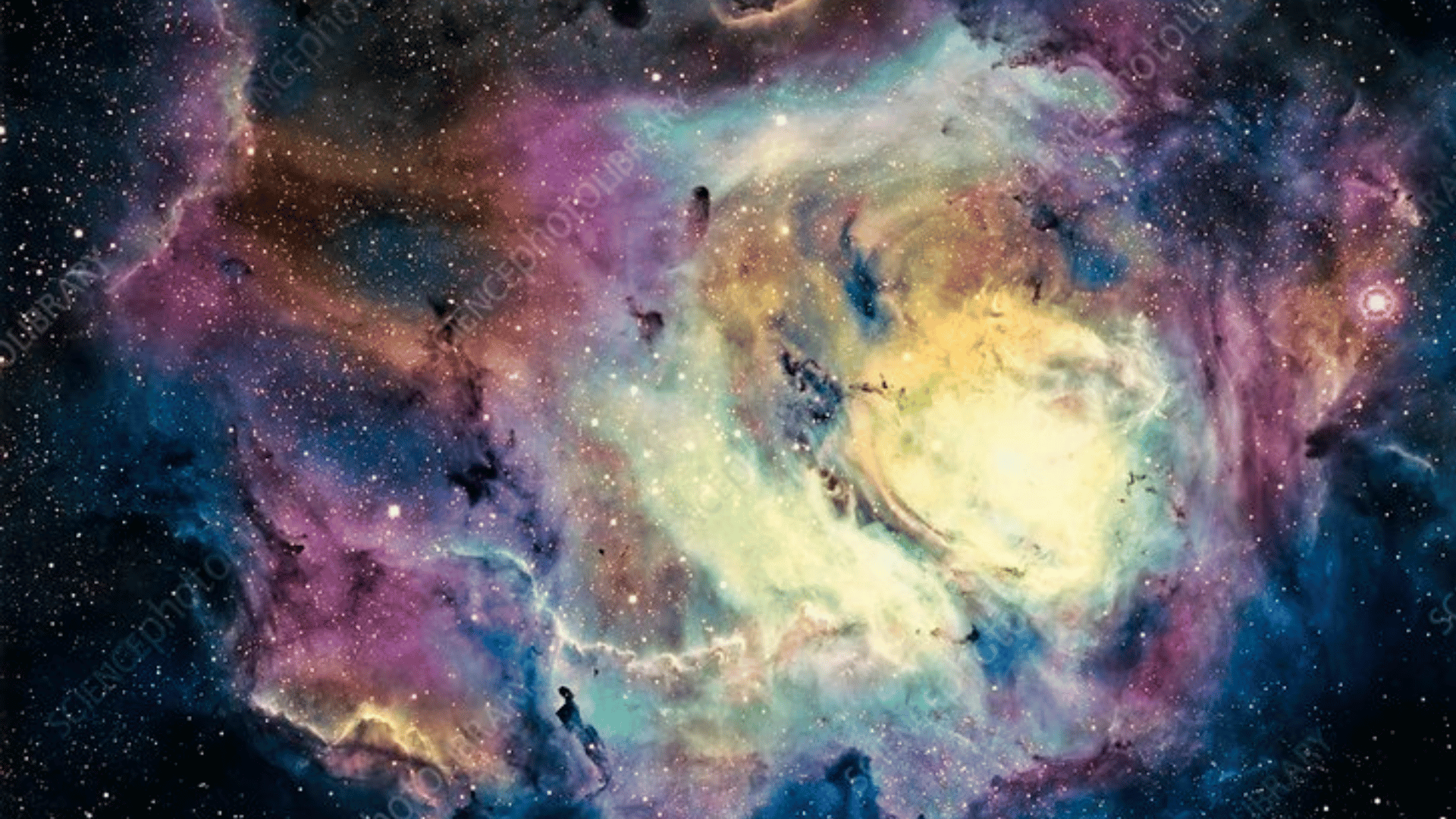
Image Source: Science Photo Library
This is one of the brightest and most striking star-forming regions in our galaxy. Its unique features make it a favorite target for both astronomers and skywatchers.
1. Visible to the Naked Eye
This is one of the brightest space clouds you can see from Earth. On a dark night away from city lights, you can spot it with just your eyes! It looks like a small, glowing patch in the sky.
Most nebulae are too dim to see without help, but this one shines brightly. That’s because it has many hot, young stars inside that light up the gas around them.
This makes it a favorite for people who love watching the night sky and finding cool space objects.
2. Enormous Size
It is massive, spanning about 110 light-years across space! To help you understand how big that is, our entire solar system would fit inside it many, many times over.
The cloud is made mostly of hydrogen gas mixed with dust. All this material floats together in space, pulled by gravity. The nebula sits about 4,000 to 6,000 light-years away from us.
Even though it’s incredibly far away, we can still see its beautiful glow in our telescopes and cameras. It’s truly one of the biggest nebulae we can observe.
3. Dark Dust Lane
One of the coolest things about this nebula is the dark stripe running through its middle. This dark lane is made of thick dust that blocks light from shining through.
The dust divides the bright glowing gas into two parts. This makes the nebula look like a lagoon with water splitting the land on two sides.
That’s exactly how it got its name! When you look at pictures of it, you can clearly see this dark strip cutting through the middle. It creates a beautiful contrast between the bright pink gas and the dark, dusty areas in space.
4. Active Star Formation
It is busy making brand new stars right now! Inside the cloud, gravity squishes gas and dust together into clumps. When these clumps get heavy and hot enough, they turn into baby stars that start to shine.
Scientists call places like this “stellar nurseries” because stars are born here. The nebula has hundreds of young stars that have just formed recently. Some of these stars are very hot and bright.
They heat up the gas around them and make it glow with beautiful colors that we can see from Earth with our telescopes.
5. Pink and Red Glow
When you see colorful photos of the Nebula, you’ll notice lots of pink and red. These pretty colors come from hot hydrogen gas that’s glowing brightly.
The young, super-hot stars inside the nebula send out special light that makes the hydrogen shine. It’s like how a neon sign glows when electricity runs through it!
Different gases make different colors in space. The hydrogen creates the pink and red we see most often. There are also some blue and green areas where other types of gas are glowing.
6. Contains Hourglass Structure
Deep inside is a smaller structure called the Hourglass Nebula. This part looks like a twisting tornado or an hourglass timer turned on its side.
It formed because of super-strong winds blowing from very hot young stars nearby. These powerful stellar winds push the gas around and create this special funnel shape.
The big temperature differences in the gas also help make this unique pattern. Through powerful telescopes, scientists can see this hourglass spinning and changing over time. It’s one of the most interesting and beautiful features hiding inside the larger Nebula.
7. Found in Sagittarius
You can find it in the star pattern Sagittarius in the night sky. This constellation is best seen during the summer months when it’s high overhead.
Sagittarius points toward the center of our Milky Way galaxy, a densely populated area containing thousands of stars. Because of this location, the Nebula sits in a part of the sky that’s packed with twinkling stars all around it.
When you look at it through binoculars or a telescope, you’ll see the colorful nebula surrounded by all these bright stars. It’s like finding a beautiful, glowing jewel in a treasure chest.
8. Beginner-Friendly Target
It is ideal for beginners exploring space with telescopes or binoculars. Because it’s so bright and big in the sky, it’s easy to find and see clearly.
You don’t need expensive equipment to enjoy looking at it. Even small telescopes and regular binoculars can show you its shape and some cool details.
Photographers love taking pictures of it because it shows up really well in their cameras. Many astronomy clubs choose this nebula for their stargazing events and parties.
Scientific Importance of the Lagoon Nebula
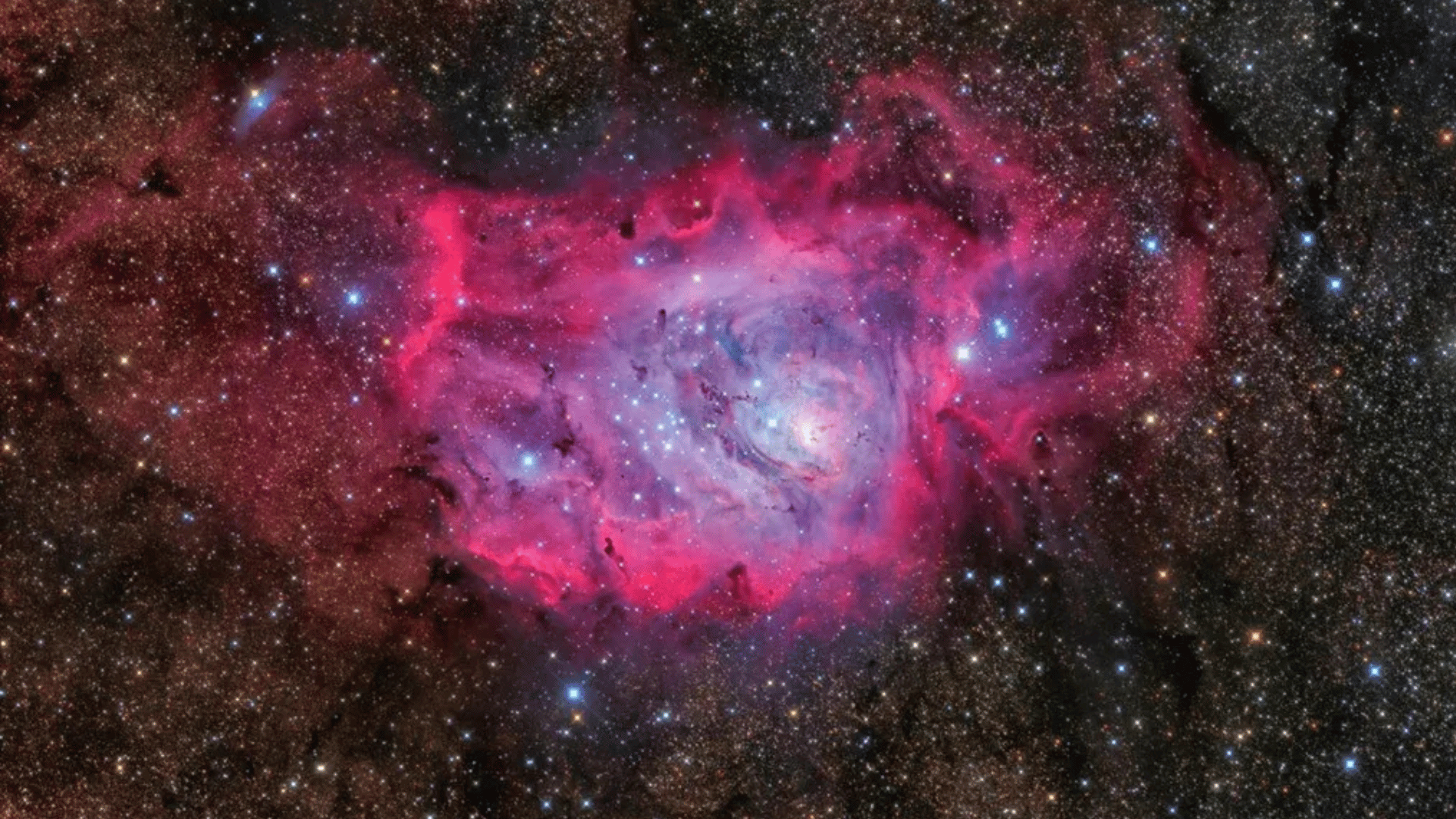
Image Source: BBC Sky at Night Magazine
It is more than just a pretty space cloud. It helps scientists learn important things about stars, gas, dust, and our galaxy.
- Stars Being Made: The Lagoon Nebula shows us stars being born right now. Scientists can watch gas and dust turn into new stars.
- Hot Stars Heat Gas: The hot, young stars in the nebula make the gas around them glow in bright colors. By studying this, scientists learn how powerful stars change the space around them.
- Star Life Cycles: The nebula has stars at different ages, from brand-new baby stars to older ones. This lets scientists see how stars grow and change over time.
- Space Laboratory: Scientists can measure the temperature, density, and makeup of the clouds in it. This information helps them understand what stars and planets are made of.
- Close to Earth: Because the it is only about 4,000 to 6,000 light-years away, we can see it clearly with telescopes. This makes it easier to study than nebulae that are much farther away.
- Tests Telescopes: Astronomers use them to test new telescopes and cameras. Its bright colors and clear details make it perfect for checking if equipment is working correctly.
- Galaxy Structure: The nebula sits near the center of the Milky Way. Studying it helps scientists understand the star-forming regions in our galaxy.
- Dust Effects: The dark lanes in the nebula block light from stars behind them. Scientists study this to learn how dust in space dims starlight and changes colors.
Star Formation in the Lagoon Nebula
Nebula is often called a stellar nursery because it’s a place where stars are being born. Inside its thick clouds of gas and dust, gravity pulls material together to form new stars.
Some of these stars are very large and hot, giving off powerful ultraviolet light. That energy makes the surrounding hydrogen gas glow with a soft red color and also shapes the nebula into unique patterns.
It’s almost like the stars are carving the clouds around them as they grow. What makes the it even more exciting is that scientists have seen protoplanetary disks here.
These are flat circles of gas and dust spinning around young stars, and over time, they may come together to form planets.
This means the it is not only creating stars but may also be building the building blocks for future solar systems like ours.
Conclusion
A glowing cosmic cloud in the night sky, the Lagoon Nebula reveals something truly special happening in space right now, proof that star formation never stops in our universe.
Packed with gas and dust that squeeze together to form baby stars, this nebula creates the beautiful pink colors often seen through telescopes.
Also known as Messier 8, this stellar nursery is one of the easiest deep-space objects to spot during summer nights.
For anyone curious about the cosmos, the Lagoon Nebula stands as a shining reminder of the endless wonders waiting to be explored across our universe.



